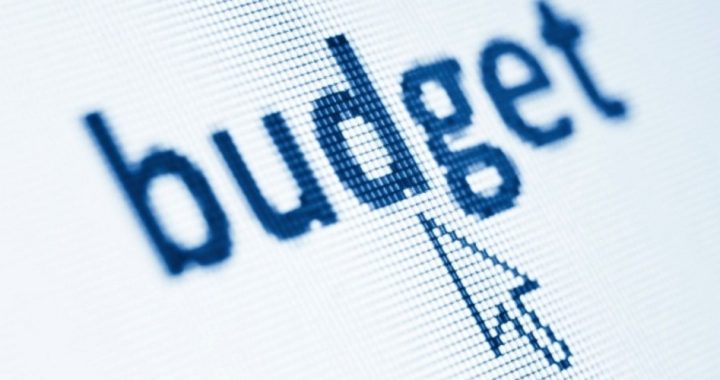
On its face the latest report from the Congressional Budget Office is gloomy enough, but careful searching reveals a surprising (and likely misplaced) optimism even in light of rising interest rates, increased healthcare costs thanks to ObamaCare, and the inevitable march of demographics and the aging Baby Boomers.
First, despite increasing regulatory overload and increased taxation of job creators thanks to the last minute fiscal cliff agreement, the CBO estimates that the economy will actually grow this year — by a paltry 1.4 percent. Next year the CBO estimates growth of nearly three times that amount: 3.4 percent. And then it predicts a robust 3.6 percent for the following years.
Second, the CBO thinks that despite the strengthening economy, unemployment will stay above 7.5 percent for the foreseeable future, partly because the economy is still recovering and partly because aging Baby Boomers will be staying in the workforce longer, which will take jobs away from others seeking employment.
Third, the CBO thinks the economy will resume “a virtuous cycle of faster growth” because of the rebound in housing construction, rising real estate prices, and an improving stock market. Each of these assumptions is fraught with difficulty. For example, the current “bump” in construction is from a very low level so any improvement looks rosy. Rising real estate prices are also showing a spotty rebound depending on where one looks, while the “overhang” of foreclosed but not-yet-sold homes remains substantial and elusive. And while the stock market averages have doubled since they hit bottom in March 2008, the real underlying strength of the markets has been anemic, at best, and some market experts are calling for a sharp decline in those averages over the coming months.
In addition, the CBO has attempted to build into their model the impact of rising interest rates as the federal government’s financial difficulties become more and more obvious to bond buyers around the world, estimating that by the end of 2017 interest rates on the 10-year treasury — a proxy for the rates charged by investors buying its debt — will increase from the current 2.1 percent to 5.2 percent. Unfortunately, the CBO fails to note exactly what impact that would have on government finances, so this thumbnail analysis will have to suffice: With a debt of $16 trillion, the government is paying about $350 billion a year — $30 billion a month — to service its gargantuan debt. If interest rates rise, as the CBO suggests, to 5.2 percent, interest charges on that $16 trillion will escalate to $832 billion a year, or $70 billion a month.
But wait! The CBO estimates that deficits will be adding at least $750 billion each year to the national debt, and so by 2017 the national debt will approach $20 trillion. Interest charges on that will be $1 trillion a year! Put another way, under the CBO’s baseline assumptions (the best-case scenario), interest rates will be eating up an amount approaching half of all tax revenues in less than five years.
That puts into perspective the CBO’s announcement — cheered by some observers — that the government will be running a federal deficit this year of “only” $845 billion.
There was a small ray of light indicating some sign of intelligent life at the CBO however, when Director Douglas Elmendorf said that the current fiddling and diddling in Washington over its dreadful financial condition will amount to nothing:
We have large projected deficits, a debt that will remain at a historically high share of GDP and will be rising at the end of the coming decade.
I think what that implies is that small changes in budget policy will not be sufficient to put the budget on a sustainable path.
One could wish that he would use stronger language, but Elmendorf is, after all, an economist and an employee of the government. Nevertheless, he is correct: Endless juggling of numbers and modifying predictions about whether sequestration will take place (or not), or the “doc fix” is implemented (or not), or the budget ceiling is raised (or not), or another budget continuing resolution is passed (or not), are all beside the point. The real problem is the inevitability of the math: The government has made promises it cannot keep, and the taxpayers and beneficiaries are about to find that out the hard way.
It’s those entitlements that are the cargo that is sinking the fiscal ship. As noted at Investors.com,
The report [makes] clear that entitlements — Social Security, Medicare, Medicaid and now Obamacare — are to blame for the continued growth in spending … Obamacare will only exacerbate this problem.
Even if the CBO is right and the economy does improve slightly, it won’t be enough to overcome the growth of entitlement spending, which will result in higher deficits and a greater national debt. According to the CBO, the national debt as percent of GDP is expected to reach its highest level since 1950 by the end of this year, and will continue its inexorable march upward thereafter.
Most chilling was the CBO’s reminder that all of this is conjecture; that it’s based on things staying as they are for the foreseeable future. But that’s whistling past the graveyard. Things won’t stay the same. If the sequester is eliminated, if the “doc fix” isn’t implemented, if the debt ceiling is raised, and continuing resolutions to fund the government continue interminably, then all bets are off.
The mathematics are inevitable. The tipping point for investors, taxpayers, and beneficiaries is out there somewhere, perhaps sooner than the CBO can predict.
A graduate of Cornell University and a former investment advisor, Bob is a regular contributor to The New American and blogs frequently at www.LightFromTheRight.com, primarily on economics and politics. He can be reached at [email protected].



